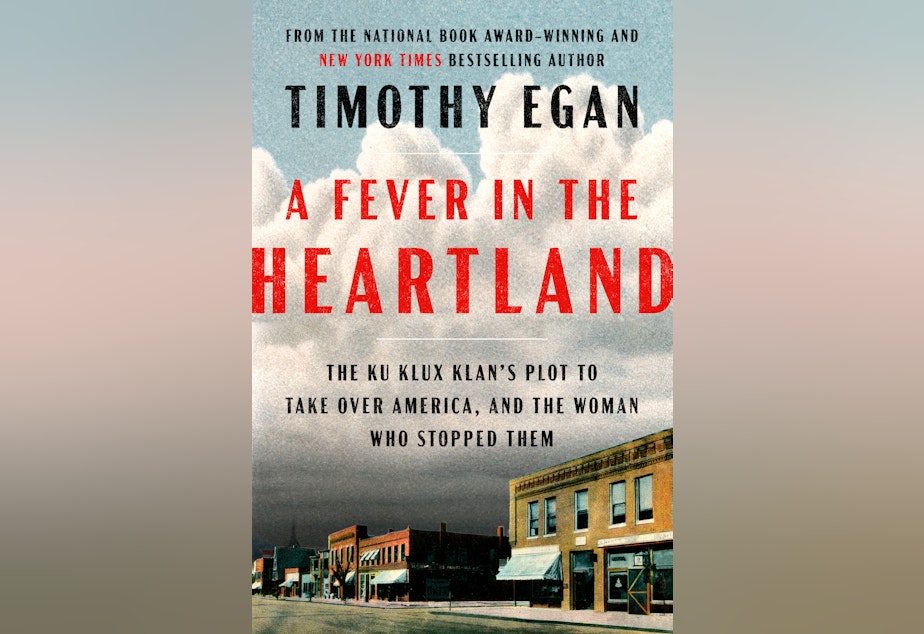At the height of the KKK's popularity, one woman's story toppled its leader

In "A Fever in the Heartland," National Book Award-winning author Timothy Egan tells the often-overlooked story of the Ku Klux Klan's power in northern states and the testimony that brought down its most powerful leader.
When you think of the 1920s, what comes to mind? Is it jazz? Or flappers? Or post-pandemic life?
How about a resurgent Ku Klux Klan embedded in government offices across the country and within the U.S. Capitol, with ambitions for the White House?
That’s the largely overlooked history that Seattle author Egan explores in “A Fever in the Heartland: The Ku Klux Klan’s Plot to Take Over America, and the Woman Who Stopped Them.”
The Klan is often depicted in histories as a terrorist group during Reconstruction and the Civil Rights-era, but the Klan of the 1920s was politically powerful and enjoyed widespread membership in many parts of the country.
"The absolute peak of their power was in the 1920s, 100 years ago, and they were mainly in the northern states," Egan said. "They were all over the Midwest, where my story takes place, where one in three white males in the state of Indiana belonged to the clan."
Sponsored
Egan explains there was a Klan governor in Oregon and Colorado. A 1924 Klan rally in Issaquah was attended by 13,000 people.
"When the Imperial Wizard landed in Seattle, he was toasted in downtown Seattle at a Chamber of Commerce luncheon," Egan said.
In "A Fever in the Heartland," Egan tells the story of David C. Stephenson, a grifter with a mysterious past who becomes the Grand Dragon of Indiana and one of the most powerful men in the nation.
"He's an American archetype. You can find him in our literature. You can find him in our politics. You can find him running for office today," Egan said.
Stephenson drifted into Indiana in 1921 and within four years, he completely owned the state and was worth $28 million. He lived in a mansion in the most affluent neighborhood in Indianapolis. He had a path to becoming a U.S. Senator and aspirations for the White House.
Sponsored
Egan documents the myriad of people attempting to bring down the KKK, including an Irish-American lawyer from Chicago and the leader of the NAACP, who had varying degrees of success in exposing the Klan's corruption and brutality.
Stephenson was ultimately brought down by the testimony of one woman, Madge Oberholtzer, who Egan said, lived at the margins of history.
"She didn't set out to bring him down," he said, "but only after she exposed the true nature of this monster, this monster who ruled the state, did the Klan finally crater."
Egan initially intended to write this book about the Klan's presence in the Northwest. Oregon had a Klan governor, the city of Astoria had a Klan rally with 10,000 people in attendance, and the Portland mayor and chief of police posed with leading Klansmen.
"Oregon had a higher percentage of Klansmen than any state outside of Indiana," Egan said.
Sponsored
This story took him to the Midwest, however.
"I shifted gears once I saw this epic struggle between Madge and the Grand Dragon," Egan said.
Timothy Egan is speaking about his book, "A Fever in the Heartland: The Ku Klux Klan’s Plot to Take Over America, and the Woman Who Stopped Them," at Town Hall Seattle on Tuesday April 4.





